| Share |  |
 | |||
Balancing Hormones Naturally
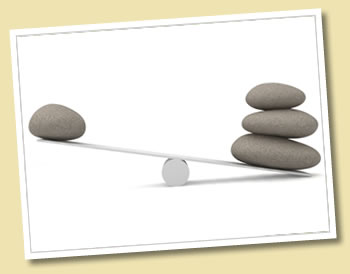 Since hormones regulate virtually every key function of the body, a wide variety of symptoms may arise from hormone imbalance. Even when symptoms are mild, these imbalances can develop into more serious conditions if they persist uncorrected. This is especially true when the demands the body is forced to cope with exceed the support and care it receives. Poor nutrition, all types of stress and toxins in our environment are examples of the many demands placed on our bodies.
Since hormones regulate virtually every key function of the body, a wide variety of symptoms may arise from hormone imbalance. Even when symptoms are mild, these imbalances can develop into more serious conditions if they persist uncorrected. This is especially true when the demands the body is forced to cope with exceed the support and care it receives. Poor nutrition, all types of stress and toxins in our environment are examples of the many demands placed on our bodies.
For women, hormones begin to fluctuate during the pre-menopausal years that usually occur between the ages of 30 and 50. However, even young women under the age of 30 may become estrogen dominant and experience symptoms of hormone imbalance due to rising levels of xenoestrogens in the environment and long-term use of oral contraceptives containing synthetic estrogen (for information on xenoestrogens and estrogen dominance, please refer to my article “Healthy Hormone Balance” in the previous issue). PMS, weight gain, endometriosis, fibroids, breast tenderness, and difficulty conceiving or carrying a pregnancy to term are common symptoms of hormone imbalance experienced by women in the premenopausal years.
Perimenopause is the term used to describe the years just prior to the onset of menopause when many women’s hormones fluctuate even more dramatically. As many as 80 percent of women develop persistent symptoms of hormone imbalance during these years, which adversely affect their mood, memory, energy levels, quality of sleep, weight, and libido in addition to producing unpleasant symptoms such as hot flashes, night sweats, heavy bleeding, vaginal dryness, and headaches.
There are many different types of hormone imbalance that affects the health and well-being of women. The good news is that all types of hormone imbalance and resulting symptoms can be resolved in natural ways that promote, rather than compromise, the health of the body.
The Problem with Conventional Solutions
The answer conventional medicine offers to women experiencing symptoms of severe hormone imbalance usually involves synthetic HRT (Hormone Replacement Therapy), surgery or various medications to alleviate symptoms such as anti-depressants or anti-anxiety drugs. Besides the fact that most of these “solutions” do not address the underlying causes of the imbalance, the side effects of the synthetic hormones used often create worse symptoms and greater health risks for women.
Common HRT Drugs
Premarin was the first drug introduced over sixty years ago to replace declining estrogen levels and alleviate such symptoms as hot flashes, mood swings, insomnia and weight gain in women approaching menopause. Although derived from a “natural” 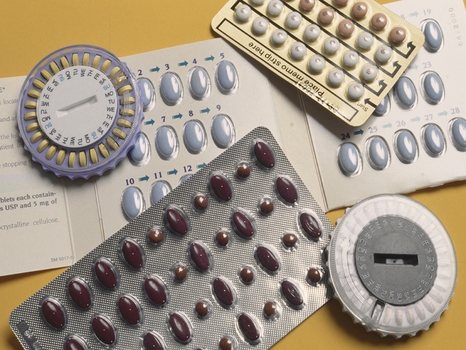 source, the estrogen in Premarin was made from horse urine, which is eight times stronger than human estrogen and not of the same molecular structure. Doctors were taught that HRT prevented heart disease, built strong bones, and kept the brains and skin of women youthful with few side effects but after millions of women took this drug for a number of years, it became apparent that rates of uterine cancer were increasing among those who used it.
source, the estrogen in Premarin was made from horse urine, which is eight times stronger than human estrogen and not of the same molecular structure. Doctors were taught that HRT prevented heart disease, built strong bones, and kept the brains and skin of women youthful with few side effects but after millions of women took this drug for a number of years, it became apparent that rates of uterine cancer were increasing among those who used it.
Since the hormone progesterone is known to balance the effects of excess estrogen, an artificial form of progesterone called “progestin” began to be prescribed in the form of a drug named “Provera”. Its purpose was to help protect female organs from the proliferation of cancer cells caused by excess estrogen. Doctors later began to prescribe a drug called Prempro, which combined the estrogen in Premarin with the progestin in Provera. Up until that time, progestins were primarily used in birth control pills.
Side Effects and Major Studies
Although giving women these types of drugs did help to alleviate symptoms such as night sweats and hot flashes, the synthetic progesterone in them produced other side effects such as abnormal menstrual flow, fluid retention, migraine headaches, breast tenderness, nausea, depression, etc. Originally, claims were made that these drugs would protect women against breast cancer and heart problems but further research and studies on long term use actually showed increased risk of cardiovascular events and breast cancer.
A randomized, placebo controlled study conducted by the WHI (Women’s Health Initiative) beginning in 1996 compared the impact on health of women taking the HRT drug Prempro to women who took no drug treatment. Due to the overall increased risk for breast cancer, heart attack, stroke, blood clots, and dementia in women who took Prempro, what was supposed to be 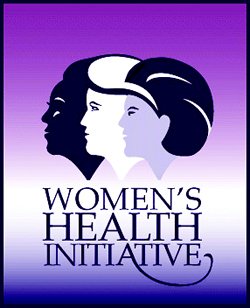 an 8.5-year study was halted in 2002 after only 5.2 years. The authors of the study clearly recognized that the risks of conventional hormone replacement therapy outweighed the benefits. Some of the particularly concerning statistics from the study of almost 17,000 women were a 41% increase in stroke, a 2,100% increase in pulmonary embolism, a 29% increase in cardiovascular disease and a 26% increase risk of breast cancer.
an 8.5-year study was halted in 2002 after only 5.2 years. The authors of the study clearly recognized that the risks of conventional hormone replacement therapy outweighed the benefits. Some of the particularly concerning statistics from the study of almost 17,000 women were a 41% increase in stroke, a 2,100% increase in pulmonary embolism, a 29% increase in cardiovascular disease and a 26% increase risk of breast cancer.
A study later conducted by the National Cancer Institute involving 46,000 women concluded that the risk of breast cancer increases by 1% each year a woman is on ERT (Estrogen Replacement Therapy) and 8% per year for women who take conventional HRT containing synthetic progestin. In just five years, this would translate to a 40% increase in the risk of developing breast cancer in women taking conventional HRT. A more recent study by the Journal of the American Chemical Society reported that a by-product of Premarin damaged DNA in a way that could cause cancer.
The potential for developing hormone dependent cancers is heightened by synthetic estrogens because they are so much more potent than the estradiol the body makes. Other forms of estrogen developed subsequent to Premarin were completely synthetic, like the ethinyl estradiol commonly used in birth control pills. This type of synthetic estrogen becomes even more of a problem because it is not metabolized in the liver and, therefore, remains in the body much longer where it has more opportunity to do damage. While estrogen the body makes is metabolized and cleared from the body is less than a day, synthetic estrogens can take many weeks. Since estrogen promotes cell growth, the overstimulation of tissue for prolonged amounts of time can sometimes result in cancer.
Other Side Effects of Synthetic Hormones
Because synthetic hormones adhere so long to receptors, they disturb the natural balancing function of other hormones in the body. For instance, progestins inhibit normal progesterone production by competing for progesterone receptors and, consequently, blocking the benefits of the progesterone produced by the body. Like synthetic estrogens, they are difficult to detoxify and eliminate and increase the toxic load of the liver. Synthetic estrogens also promote fat synthesis, blood clots, and increased blood pressure from the retention of sodium and water and loss of magnesium and potassium. Moreover, excess estrogen accelerates collagen aging, which weakens the walls of arteries and puts a woman more at risk for heart disease.
Natural versus Synthetic – What’s the Real Difference?
To better understand the benefits of natural/bioidentical hormones over synthetic ones, it is first helpful to grasp a few basics about how hormones work. Hormones serve as messengers to instruct and regulate specific cells to perform various functions  and reactions within the body. Reproductive and adrenal hormones are lipid (fat) based hormones, officially termed “steroid” hormones since they are made from cholesterol.
and reactions within the body. Reproductive and adrenal hormones are lipid (fat) based hormones, officially termed “steroid” hormones since they are made from cholesterol.
In order for steroid hormones to affect cell processes, they must first pass through cell membranes and bind to receptor molecules within the nucleus of the cell. Think of hormones as a key and the receptor site like a lock on a door. Once the hormone gets inside the cell and attaches to the receptor site, it gives the cell instructions. However, the key must have the exact molecular shape if it is to fully turn the lock. No matter how similar a synthetic hormone is to what the body makes, altered hormones are like foreign substances in the body because no receptor sites exist that match them. Even when the changes in chemical structure are subtle, unwanted and sometimes harmful messages that affect the health of the body are relayed to cells by synthetic hormones.
The reason the medical community in America does not prescribe natural hormones is not because they are ignorant of the fact that they are more safe and effective. Rather, it is because no substance identical to what is found in nature can be patented and become the exclusive product of a single drug company. Because the profit margin of natural substances is limited, they are ignored when it comes to funding for research that comes from pharmaceutical companies. But if they alter the molecular structure even slightly, a patent may be obtained and significant profit for the drug company is produced.
Natural Hormones – a Better Solution
Although bioidentical hormones have been around over 50 years, they are just beginning to gain widespread recognition for the many benefits and advantages they offer for women over conventional hormone replacement. Bioidentical hormones are made in a lab, primarily from a compound found in wild yam and soy. However, they are referred to as “natural” because of the f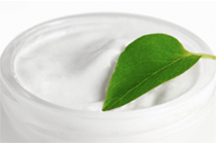 act that they are identical to what the body produces - not just because they are derived from plants.
act that they are identical to what the body produces - not just because they are derived from plants.
Because natural hormones function in an identical manner to hormones produced by our body, they are far more safe and free of long-term risks if used properly. Moreover, they are able to quickly exit the body rather than accumulate like synthetic hormones are known to do. Natural hormones also work more effectively to help restore energy, mental clarity, libido, normal sleep, vaginal comfort, and offset other symptoms of hormone imbalance. An even greater advantage is that they do all of this without producing harmful side effects or blocking or interfering with natural hormone production.
Bioidentical Hormone Replacement Therapy (BHRT) is the practice of using hormones that are structurally identical to the hormones produced by the body in the amounts that mimic what the body would ordinarily make itself. BHRT utilizes various types of delivery methods such as transdermal creams, gels, drops, sublinguals and suppositories that bypass the liver and go directly into the bloodstream rather than oral forms the liver must break down. The use of bioidentical hormones usually involves obtaining a prescription through a compounding pharmacy that is prepared by a compounding pharmacist who has training and experience with BHRT. Bioidentical hormones are normally only prescribed after a woman’s hormones levels are tested so the right type and amounts of natural hormones can be prescribed to best meet individual needs.
Natural progesterone is the exception as it may be easily obtained without a prescription. This transdermal cream is extremely safe and effective for offsetting excess estrogen levels, which is the most common hormone imbalance. To learn more about the benefits of natural progesterone cream and specific recommendations on how to use it, please refer to my article in this issue entitled “Progesterone – the Hormone Harmonizer.”
Although it is beyond the scope of this particular article to explain about the different kinds of bioidentical hormones and what may or may not be needed for various conditions and hormone imbalances, I have provided some basic information and guidelines on the subject that you can find after the conclusion of this article. Included in the information are names of a few books that I believe would be particularly helpful to you as well as websites where you can find resources for hormone testing and how to locate a doctor or compounding pharmacy trained in the use of bioidentical hormones.
Is Hormone Replacement the Total Answer?
Achieving hormone balance is about far more than just using supplemental natural hormones. No amount or type of hormone 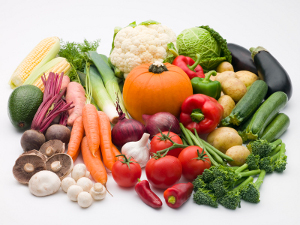 will return the body back to a healthy balance if a person is chronically exposed to toxins, xenoestrogens, stress and a poor diet. No matter what condition or type of hormone imbalance a person one has, just following the recommendations I covered in “Healthy Hormone Balance”, along with the addition of appropriate herbs and nutritional supplements, oftentimes is enough to restore hormone balance. One thing is certain – taking a boatload of replacement hormones won’t allow you to achieve truly healthy balance if the factors that led to the imbalance are not addressed.
will return the body back to a healthy balance if a person is chronically exposed to toxins, xenoestrogens, stress and a poor diet. No matter what condition or type of hormone imbalance a person one has, just following the recommendations I covered in “Healthy Hormone Balance”, along with the addition of appropriate herbs and nutritional supplements, oftentimes is enough to restore hormone balance. One thing is certain – taking a boatload of replacement hormones won’t allow you to achieve truly healthy balance if the factors that led to the imbalance are not addressed.
I would encourage you to read the above-mentioned article if you have not and carefully review the sections that cover reducing your exposure to xenoestrogens, supporting the liver and detoxification processes of the body, eating a hormone healthy diet, exercising regularly and reducing stress. Reducing stress is particularly important since stress significantly affects the adrenal glands that are responsible for producing approximately 35 percent of premenopausal female hormones and almost half of postmenopausal hormones.
Common Types of Hormone Imbalance
There are many different types of hormone imbalance and an array of symptoms typically found with each type. A woman may have more than one type of hormone imbalance and any given symptom may have more than one cause.
The three hormones that are most out of balance in women are estrogen, progesterone, and testosterone. Each of these 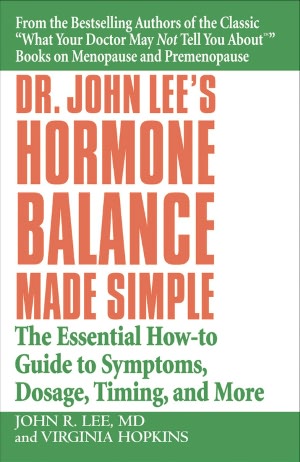 steroid hormones is made by the ovaries in addition to being produced by the adrenal glands in smaller amounts. Although estrogen and progesterone are the primary female hormones, testosterone also plays a role in female hormone balance by contributing to libido and building bone even though the amounts women produce is decidedly less than men.
steroid hormones is made by the ovaries in addition to being produced by the adrenal glands in smaller amounts. Although estrogen and progesterone are the primary female hormones, testosterone also plays a role in female hormone balance by contributing to libido and building bone even though the amounts women produce is decidedly less than men.
Based on his 30 plus years of working with women, Dr. John Lee devised a basic hormone balance test that is included in his book Hormone Balance Made Simple, a compilation of guidelines and recommendations for hormone balance in women. Keep in mind that the symptoms listed in each group for this test are not the only ones a woman with this type of imbalance may experience. However, they do represent the ones Dr. Lee most commonly observed through his decades of working with women and hormone imbalance issues.
According to the test instructions, if you identify with two or more of the symptoms in a particular group, there is a good chance you have that imbalance. The higher the number of symptoms identified within a particular group, the greater the likelihood a person has that type of hormone imbalance. For your convenience, I have listed directly underneath the groups of symptoms the type of hormone imbalance and the brief recommendations given in the book concerning each imbalance. More specific recommendations for particular conditions associated with hormone imbalance in women are given in the “Guidelines for Natural Hormone Balance” you will find after the “Resource Guide for Bioidentical Hormone Replacement”.
The Hormone Balance Test
Symptom Group One
- PMS
- Insomnia
- Painful and/or lumpy breasts
- Unexplained weight gain
- Cyclical headaches
- Anxiety
- Early miscarriage
- Infertility
Progesterone Deficiency - This is considered the most common hormone imbalance among women of all ages. If you identified with two or more of the indicators, you may need to make dietary changes, eliminate all forms of synthetic estrogen and use natural progesterone cream.
Symptom Group Two
- Vaginal dryness
- Night sweats
- Painful intercourse
- Memory lapses/difficulty concentrating
- Bladder infections
- Lethargic depression
- Hot flashes
Estrogen Deficiency – This type of hormone balance is most common in menopausal women, especially those who are petite or slim since estrogen is largely produced in fat cells when it is no longer produced by the ovaries. It may also be experienced if a woman undergoes a hysterectomy, chemotherapy, radiation or has an autoimmune disease. If you have two or more of these symptoms, you could benefit from including more foods rich in phytoestrogens and taking herbs such as black cohosh or red clover. In some cases, a small dose of natural/bioidentical estrogen from a compounding pharmacy may need to be prescribed. Dr. Lee recommends that the dose be about one tenth of what is usually prescribed by doctors.
Symptom Group Three
- Puffiness and bloating
- Cervical dysplasia (abnormal pap smear)
- Rapid weight gain – excess fat around hips, buttocks and thighs
- Breast tenderness
- Mood swings
- Heavy bleeding
- Anxious depression
- Migraine headaches
- Insomnia
- Foggy thinking
- Red flush on face
- Gallbladder problems
- Weepiness
Excess Estrogen – This type of imbalance is most often resolved by getting off conventional synthetic hormones and eliminating sources of xenoestrogens. Adding progesterone often helps to relieve symptoms and balance hormones.
Symptom Group Four
Symptom Group Four is for anyone who checked two or more symptoms in both “Symptom Group One” and “Symptom Group Three”.
Estrogen Dominance – This imbalance is caused by not having enough progesterone to balance the effects of estrogen. It is possible to have low estrogen or symptoms of estrogen deficiency but still have estrogen dominance if you have even lower progesterone levels.
Symptom Group Five
- Acne
- Polycystic ovary syndrome (PCOS)
- Excessive hair on the face and the arms
- Hypoglycemia and/or unstable blood sugar
- Thinning hair on the head
- Infertility
- Ovarian cysts
- Mid-cycle pain
- Irregular or absent menstrual periods
Excess Androgens (male hormones) – this imbalance is most often caused by too much sugar and simple carbohydrates in the diet and can often be changed with simple dietary changes and regular, moderate exercise.
Symptom Group Six
- Debilitating fatigue
- Unstable blood sugar
- Foggy thinking
- Low blood pressure
- Thin and/or dry skin
- Intolerance to exercise
- Brown spots on face
Cortisol deficiency – is caused by tired adrenals, which is usually caused by chronic stress. Information is contained in Dr. John Lee’s books What Your Doctor May Not Tell You About Premenopause and What Your Doctor May Not Tell You About Menopause on how to restore the adrenal glands.
Testing for Hormone Imbalance
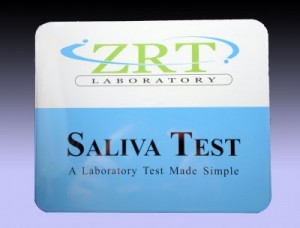 Although symptoms are good indicators, saliva testing is probably the best way to know for sure if your hormone levels are within normal ranges for your age and stage of life or not. Scientific studies show a strong correlation between steroid hormone levels in saliva and the amount of hormone in the blood that is active or bioavailable whereas conventional blood tests do not reflect true levels of available hormones. That is because steroid hormones are lipid (fat) molecules that are not soluble in water and must be bound to carrier proteins to be travel in the blood. Saliva, however, only contains the unbound biologically active hormone molecules, which is the kind found in the tissues that most impacts the body.
Although symptoms are good indicators, saliva testing is probably the best way to know for sure if your hormone levels are within normal ranges for your age and stage of life or not. Scientific studies show a strong correlation between steroid hormone levels in saliva and the amount of hormone in the blood that is active or bioavailable whereas conventional blood tests do not reflect true levels of available hormones. That is because steroid hormones are lipid (fat) molecules that are not soluble in water and must be bound to carrier proteins to be travel in the blood. Saliva, however, only contains the unbound biologically active hormone molecules, which is the kind found in the tissues that most impacts the body.
Saliva testing is easy to do, is reasonably priced (about $30-35 per hormone tested) and may be ordered online through a reputable lab without a doctor’s order if your doctor does not do this type of testing. All types of hormones can be tested including the three estrogens (E1, E2 and E3), progesterone, DHEA, testosterone, and cortisol. Hormones in saliva are exceptionally stable and can be stored at room temperature for up to a week without affecting the accuracy of the result, which offers maximum flexibility in sample collection and shipment. Your results and a complete interpretive report by a qualified doctor will be directly sent to you along with individualized recommendations.
Conclusion
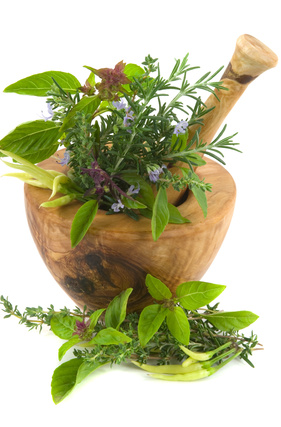 It is needless for women to continue to suffer with symptoms caused by hormone imbalance when natural solutions are available and obtainable. As I referenced at the beginning of this article, some types of hormone imbalance can develop into serious conditions like breast or uterine cancer if they continue too long. Learn to listen to what your body is trying to tell you when you experience these symptoms. Seek out the right solutions that address the underlying cause of the imbalance rather wait until condition progresses to a point where you feel you have no choice but to resort to measures such as surgery and drugs that do not resolve the underlying cause and may result in the development of other conditions and declining health in later years.
It is needless for women to continue to suffer with symptoms caused by hormone imbalance when natural solutions are available and obtainable. As I referenced at the beginning of this article, some types of hormone imbalance can develop into serious conditions like breast or uterine cancer if they continue too long. Learn to listen to what your body is trying to tell you when you experience these symptoms. Seek out the right solutions that address the underlying cause of the imbalance rather wait until condition progresses to a point where you feel you have no choice but to resort to measures such as surgery and drugs that do not resolve the underlying cause and may result in the development of other conditions and declining health in later years.
I would encourage you to read my other article in this issue on “Progesterone – the Hormone Harmonizer” if you identified with two or more of the symptoms in the “Hormone Balance Test” that pertain to the hormone imbalances of either low progesterone, high estrogen or estrogen dominance. Since these are the most common hormone imbalances women experience, it is important to learn more about a safe and effective way to raise progesterone levels and offset the negative effects of excess estrogen that so easily occurs due to the environment we live in today.
Make use of the herbs that God has placed on the earth that contain hormone balancing properties and be sure to give your body all the extra nutritional support it needs via the right foods and nutritional supplements. You will find that your body is well able to balance and heal itself when it is given the resources it needs and is free of accumulated toxins.
Because the information I have endeavored to address in this article is by no means complete with regard to the many aspects of hormone imbalance, I would also greatly encourage you to read for yourself the information, research and guidelines contained in some of the books I have listed below.
Sources:
What Your Doctor May Not Tell You About Menopause by John R. Lee, M.D.
What Your Doctor May Not Tell You About Premenopause by John R. Lee, M.D.
What Your Doctor May Not Tell You About Breast Cancer by John R. Lee, M.D. and Dr. David Save
Hormone Balance Made Simple – the Essential How-to Guide to Symptoms, Dosage, Timing and More by John R. Lee, M.D. and Virginia Hopkins
A Woman’s Guide to Natural Hormones by Christine Conrad
Natural Hormone Balance for Women by Uzzi Reiss, M.D., O.B. Gyn
The Miracle of Natural Hormones by David Brownstein, M.D.
RESOURCE GUIDE FOR BIOIDENTICAL HORMONE REPLACEMENT
Most forms of natural estrogen may only be obtained through prescriptions. For the best results, a trained compounding pharmacist that specializes in natural hormones and ways to individualize hormone treatment should compound the prescription. Compounded bioidentical hormones are available in different forms, including transdermal creams, gels, drops, sublinguals and suppositories. The use of creams is particularly advantageous in that the hormone bypasses the liver and is delivered directly to the bloodstream, which gives an immediate systemic effect.
Locating Physicians and Compounding Pharmacies
The following organizations may be helpful to you in locating a physician in your area who is trained in bioidentical hormone replacement:
Natural Woman Institute – www.naturalwoman.org
American College for the Advancement in Medicine – www.acamnet.org
American Holistic Medical Association – www.holisticmedicine.org
Another way to find out what doctors in your area prescribe bio-identical hormones is to call local compounding pharmacies and ask the pharmacist for names of recommended doctors who prescribe bioidentical hormones. If you need help finding a compounding pharmacy in your area, you may contact
International Academy of Compounding Pharmacists (IACP) _ www.iacprx.org
Professional Compounding Centers of America (PCCA) - www.pccarx.com
Pharmacy Compounding Accreditation Board (PCAB) - www.pcab.org
GUIDELINES FOR HORMONE REPLACEMENT
According to Dr. John Lee, three basic guidelines should be followed when it comes to hormone replacement.
-
Hormones should only be used when they are needed in cases where they either measure low or clear symptoms of imbalance exist.
-
Only use bioidentical hormones and never any type of synthetic hormone.
-
Use hormones in amounts that imitate what the body makes as closely as possible – just enough to create hormone balance.
For more specific guidelines and recommendations regarding the use of bioidentical hormone replacement, I would recommend the following books: Dr. John Lee’s Hormone Balance Made Simple – The Essential How-to Guide to Symptoms, Dosage, Timing, and More by John R. Lee, M.D. and Virginia Hopkins, A Woman’s Guide to Natural Hormones by Christine Conrad and Natural Hormone Balance for Women by Uzzi Reiss, M.D./O.B. GYN
These books provide a wealth of very practical information and should provide the answers you need for every situation, including how to transition from HRT to BHRT and how to work with your existing doctor if you have access to a doctor who specializes in natural hormone therapy.
Hormone Testing Recommendations
ZRT Laboratory – offers state-of-the-art saliva and blood capillary blood spot testing technology for accurate measurement of a broad array of hormones and detection of hormone imbalances. You may learn more information at www.zrtlab.com.
Information on Estrogen and Estrogen Replacement
Three Forms of Estrogen
-
Estradiol – is the form of estrogen that is most commonly replaced to help with menopausal symptoms or if a woman has a hysterectomy (surgical menopause). It is the strongest and most aggressive form of estrogen and is the greatest stimulator of breast tissue and endometrial cells. Estradiol is the form of estrogen believed to be a cause of breast and uterine cancer.
-
Estriol – is the estrogen most beneficial to the vagina, cervix and vulva. Supplementing with it can help with vaginal dryness and atrophy, which predisposes a woman to vaginitis and cystitis. It is also the form of estrogen that has the least stimulating effect on breast tissue and may be protective against breast cancer.
-
Estrone – is the estrogen that is converted from body fat and is made more than estradiol after menopause. It is not as potent as estradiol but performs the same basic functions.
Guidelines to Consider Regarding Estrogen Replacement
-
Estrogen supplements are not necessary for women still having periods. The fact that a woman is still menstruating is indicative of the fact that she is making sufficient estrogen.
-
Even natural estrogens should be limited to women with severe menopausal symptoms that do not respond sufficiently to nutritional and herbal supplementation, diet, exercise and lifestyle modifications. Estradiol levels are sufficient in two-thirds of women after menopause due to the fact that small amounts can still be made in the ovaries after menopause and that estrogen is produced by the adrenal glands and in fat cells to some degree.
-
Never take estrogen alone without the protective balance of progesterone – unopposed estrogen therapy increases the risk for blood clotting and fluid retention, gallbladder disease, weight gain and the growth of uterine fibroids in addition to increasing the risk of endometrial cancer and possibly breast cancer. This cardinal guideline applies whether you have your uterus or not.
-
Oral forms of estrogen should be avoided. Oral estrogen increase levels of C-reactive protein, a marker of inflammation associated with heart disease. Liver proteins created by oral estrogens raise blood pressure, raise triglyceride levels, and suppress thyroid function. Some studies also link the use of oral estrogens to dementia and urinary incontinence.
-
The greatest benefit from estrogen replacement therapy is a bioidentical compound that mimics the bodies own production of estrogen in the same proportions the body produces (80% estriol, 10%, estrone and 10% estradiol). Tri-Est is such a formula that has the same chemical structure and the same proportions of the three estrogens in the body. Bi-Est is another that contains only estradiol and estriol.
GUIDELINES FOR NATURAL HORMONE BALANCE
Many of the conditions and symptoms women commonly experience relate to an imbalance between estrogen and progesterone. Factors such as diet, stress and exposure to xenoestrogens often cause progesterone levels to decrease ten to twenty years before a woman enters menopause. Because estrogen levels do not decrease nearly as much, and may even increase due to synthetic and environmental estrogens, the imbalance created between these two hormones is often the cause of many of the hormone related problems addressed in this guide.
The basic guidelines listed below will help improve overall health in addition to correcting conditions of hormone imbalance. More detailed information on some of these recommendations may be found in my articles “Healthy Hormone Balance” or “Progesterone – the Hormone Harmonizer”. Additional recommendations for each hormone imbalance are included following the description of each condition. Brief descriptions for particular herbs or herbal formulas beneficial for correcting various types of hormone imbalance that affect women are listed at the end.
-
Limit exposure to sources of xenoestrogens (refer to the section on “Ways to Reduce or Eliminate Exposure to Xenoestrogens” in my article “Healthy Hormone Balance” for more information).
-
Eat a hormone healthy diet
-
Include plenty of fresh fruits and vegetables, whole grains, nuts, beans, seeds, legumes, quality proteins and good fats.
-
Avoid meats and dairy products from conventionally raised animals, refined sugar and carbohydrates, fried foods, hydrogenated or partially hydrogenated fats, and processed foods with artificial flavoring, coloring and preservatives.
-
-
Drink plenty of pure water and avoid caffeinated beverages, alcohol and soda, including diet soda (besides harmful sugars, high amounts of phosphorus in soda leeches minerals from the bones). Drinking more than one cup of coffee a day is known to raise estrogen levels in women and add to the risk of breast and endometrial cancer. If you do drink coffee, use organic coffee since coffee bean plants are the third most heavily sprayed crop. Residues from these chemicals can act as xenoestrogens to trigger hormone imbalance. If you drink decaffeinated coffee, use a type with a solvent free decaffeination method such as "Swiss Water Process" for the same reason.
-
Improve digestion by eating enzyme rich foods and/or supplementing with plant-based enzymes (See my article “The Key to Good Digestion”). Hormones are produced from proteins and poor protein digestion can be a root cause of hormone imbalance.
-
Support your liver in its efforts to break down and detoxify excess natural estrogens and xenoestrogens. The liver must produce sufficient bile in order for toxins to be eliminated quickly rather than accumulate in the system. For more information on how to promote liver detoxification, I refer you to my articles “Detoxifying for Better Health – Part 3 and Part 6).
-
Replace nutrients the body is low on or missing that particularly affect hormone balance.
-
Use herbs/herbal formulas that contain herbs high in phytohormones that interact and help regulate human hormones (a brief description of the herbal formulas recommended for each condition in this guide are listed after the section on “Common Types of Hormone Imbalance Conditions”.
-
Use natural progesterone cream to help eliminate excessive levels of estrogen relative to progesterone. For information on progesterone and guidelines for its usage, see my other article in this issue “Progesterone – the Hormone Harmonizer”.
COMMON TYPES OF HORMONE IMBALANCE CONDITIONS
Premenstrual Syndrome (PMS)
Many factors contribute to the symptoms of PMS. The major symptoms experienced by women are cramping, bloating, water retention, breast tenderness, back pain, irritability, headaches, anxiety, mood swings, and depression. Symptoms usually begin within the two weeks before a woman’s period and increase in intensity until menstruation begins or a few days into menstruation.
PMS can be eliminated or significantly improved simply by following dietary and lifestyle guidelines for healthy hormone balance and adding key nutrients and herbs known to naturally enhance hormone balance. It is particularly important that sugar and caffeine be eliminated as much as possible the last ten days to two weeks of the menstrual cycle when the effects of the hormone imbalance are typically experienced.
Reducing stress as much as possible is important because the mood-enhancing hormones serotonin and dopamine are involved in the prevention of PMS symptoms such as breast pain, digestive upset, cravings, depression, anxiety, poor concentration and lack of motivation. Stress also raises the hormone aldosterone that contributes to water retention and magnesium loss. Exercise is helpful for alleviating certain PMS symptoms and is a great reliever of stress as well. It is also recommended that use of birth control pills with synthetic estrogen be discontinued since they could add to the estrogen overload.
Nutritional Supplements for PMS and Other Hormone Imbalances
The particular supplements recommended for PMS that can also be helpful with other types of hormone imbalances covered in this guide are:
-
B-complex vitamins – B vitamins help stabilize moods, relieve symptoms of anxiety, irritability and depression, reduce water retention and help maintain normal blood sugar levels. Extra amounts of Vitamin B-6 (50 mg.) is especially recommended for taking the last two weeks of the menstrual cycle for women with PMS since high levels of estrogen tends to block this particular vitamin that is so important for supporting the nervous system.
-
Magnesium - Magnesium is often considered the nutritional missing link to menstrual wellness and is particularly helpful for reducing fluid retention, breast tenderness, anxiety, fatigue, and bloating. Many women are deficient in magnesium due to the fact that it is reduced by estrogen and the consumption of processed foods.
-
GLA (Gamma Linoleic Acid) - GLA aids in hormone balance and influences the production of prostaglandins that regulate pain and inflammation in the body. Besides helping with breast tenderness, cramping and swelling, it also helps to increase muscle mass and loss of body fat. Oils such as evening primrose, borage oil and black current oil are the richest sources of GLA in the world.
-
Vitamin E – Vitamin E reduces prostaglandin production and helps with cramps, edema, fibrocystic breast and breast tenderness. Vitamin E is a natural blood thinner that helps strengthen blood vessel walls and is highly protective against heart attacks and strokes, which is the leading cause of death in women. Most experts recommend 200 to 400 IU daily of mixed tocopherols (alpha, beta, gamma and delta) rather than isolated alpha tocopherol that is found in many vitamin E supplements.
-
Natural Progesterone Cream – Progesterone helps restore hormone balance and can prevent many PMS symptoms such as anxiety, headaches, sleep disruption, water retention and breast tenderness. The primary value of using progesterone cream is to offset the imbalance caused by excess estrogen. A quality progesterone cream should contain at least 450-500 mg. of real progesterone in order to obtain the recommended standardized dose of 20 to 22 mg. While the wild yam root herb can act as a precursor to progesterone production, it is not a substitute for real progesterone and should not be confused with it. It is also important to be sure that the carrier ingredients in a progesterone cream product are paraben free and that the cream is micronized for better absorption.
Herbal formulas that work well to help women with PMS are Wild Yam and Chaste Tree, Female Comfort and FCS II.
Menopause
Menopause is a transition time in which the body adjusts to fluctuating levels of hormones caused by the aging process. Although declining estrogen levels are the cause of certain types of menopausal symptoms, progesterone levels drop far more significantly – as much as 90% compared to a 40-50% drop in estrogen. The fall of these hormone levels triggers the release of another hormone (FSH – Follicle-Stimulating Hormone) from the pituitary gland. Rising levels of FSH can disturb the control center part of the brain that regulates body temperature, sleep, mood, weight and energy levels.
Stress also affects this part of the brain and long-term stress can exhaust the adrenal glands. Weakened adrenal glands affects hormone levels since they take over to a degree the role of the ovaries in post menopause hormone production. Estrogen is also produced in fat cells, which is why menopausal women with more body fat have higher estrogen levels, and those who are slim are often estrogen deficient. The symptoms of menopause most commonly experienced are:
Hot Flashes and Night Sweats
These symptoms of hormone imbalance occur when the ovaries no longer respond to signals sent by the pituitary glands to produce estrogen and progesterone. In the time it takes the body to adjust and shift hormone production over to the adrenal glands, hormone signals may go awry, resulting in increased activity in the part of the brain that controls capillary dilation and sweating mechanisms.
Although hot flashes and night sweats are linked with low estrogen levels, raising levels of progesterone can often help since progesterone improves the sensitivity of estrogen receptors and helps restore hormone balance. Herbs high in phytoestrogens such as black cohosh may be used as a natural estrogen replacement to help with these symptoms. Because black cohosh used in large quantities can dilate the blood vessels enough to create vasodilative headaches or dizziness in some women, a time-released form with the balancing effects of the herb dong quai provides a more sustained release and prevents such problems (see description of Flash Ease in the herbal formula guide).
Essential oils such as clary sage, pink grapefruit, and geranium also have estrogen-stimulating qualities. A few drops of each of these oils can be added to a little water and placed in a spray bottle, which can be misted around the face (with the eyes closed) when a woman feels a hot flash coming on. Peppermint oil can also be used for its “cooling” properties
A congested liver and adrenal glands weakened from the effects of prolonged stress also contribute to the occurrence of menopausal symptoms. Using extra nutritional support and herbs to detoxify the liver and strengthen the adrenal glands can help stabilize hormone fluctuations and lessen the occurrence of such symptoms. Vitamin C with bioflavonoids, pantothenic acid and licorice root are helpful in supporting the adrenal glands. Combinations of appropriate nutrients with an adrenal glandular may be needed if the adrenal are severely fatigued. Information on liver detoxification may be found in my articles “Healthy Hormone Balance” and “Detoxifying for Better Health – Part 3
Vaginal Dryness
Progesterone cream may be all that is needed in most cases to help with vaginal dryness. A vaginal gel or cream containing natural estradiol or estriol could be used short term to raise estrogen levels to alleviate this condition.
Only a small percentage of women suffer from severe enough hot flashes and vaginal dryness to warrant needing estrogen and then often only for a short time. Women who follow the basic guidelines pertaining to diet, exercise, nutritional and appropriate herbal supplementation and stress reduction should have very few problems going through menopause. Adding progesterone cream (see my article on “Progesterone – the Hormone Harmonizer” for more information) should helpful for the majority of the rest.
Menstrual Irregularities
Heavy bleeding – Use herbal formulas that contains herbs such as cramp bark, yarrow, and capsicum. If your cramping occurs at a particular time in your cycle, start using the herbs a few days before that time. The herbal formulas I would recommend for this condition would be either Menstrual Reg or FCS II. Additional amounts of the single herbs yarrow, bayberry or capsicum may be needed for excessive bleeding.
Cramps and Painful Periods – Magnesium and herbs such as cramp bark are good for sharp cramps due to muscle spasms. Dull pains are due more to congestion in the pelvic area due to lack of good blood flow and respond best to herbs such as dong quai. Herbal formulas you may find helpful are Cramp Relief and Female Comfort.
Irregular or absent menses – This condition is usually due to low progesterone levels. Herbs such as chaste tree (also called Vitex) work well to normalize cycles by stimulating the brain to produce the hormone (LH) responsible for progesterone production. Dr. Lee also recommends using natural progesterone cream beginning on day 12 until sometime between day 21 and 28, depending upon the normal length of the woman’s cycle. This should help periods to become more regular after a few months. The most recommended herbal formulas would be Wild Yam and Chaste Tree and Menstrual Reg.
Fibrocystic Breasts
Fibrocystic breasts are an overgrowth of normal breast tissue that is primarily due to excessive exposure to estrogens over a prolonged period of time. Too much free circulating estrogen makes breast tissue swell and hold water. In the case of fibrocystic breast, the use of progesterone cream topically is quite effective. According to Dr. John Lee, using 15 to 20 mg of progesterone cream from ovulation until the day or two before the next period can result in normal breast tissue in three to four months. After the condition improves, the amount of progesterone cream can be tapered off to the minimum dose needed to prevent reoccurrence. He also recommends taking 400 mg. of vitamin E at bedtime every night as well as 300 mg. of magnesium and 50 mg. of vitamin B-6 a day. Doing away with or at least reducing caffeine, sugar and refined carbohydrates can be extremely helpful in preventing and eliminating this condition.
Endometriosis
Endometriosis is the excess growth of endometrial tissue, which causes severe pain and cramping before and during periods. Endometrial tissue responds to estrogen just as endometrial cells in the uterus do. When progesterone levels are much higher during pregnancy, the growth of this tissue recedes. Dr. Lee recommendations for helping to control endometriosis is to use progesterone cream in amounts that mimic those of early pregnancy beginning on the eight day of the menstrual cycle when estrogen levels start to rise, and continuing until day 26 of a 28 day cycle. In early pregnancy, progesterone production doubles or triples, from the normal 20 to 30 mg. per day to 40 to 60 mg. per day. As the condition improves, decrease the amount to the minimum needed to keep the growth in check. As with all conditions of hormone imbalance, avoiding xenoestrogens and helping the body detoxify excess estrogen is also recommended.
Uterine Fibroids
Fibroids are growths made up of muscle cells and other tissue that grow in the uterine wall. Fibroids tend to grow during the years before menopause and then atrophy after menopause when the ovaries stop producing estrogen. Women with fibroids are often estrogen dominant and have low progesterone levels. The more estrogen fibroids are exposed to, the faster they grow. In addition to reducing exposure to xenoestrogens, enhancing liver detoxification, and following the dietary guidelines for healthy hormone balance, the use of natural progesterone cream can help slow or stop fibroid growth. The most effective herbal formula to directly work on uterine fibroids is V-X (see description below for directions on how it is used). Menstrual Reg with extra yarrow can be helpful as well for healing the uterus and decreasing the amount of bleeding. FCS II and Female Comfort also can help to restore hormone balance to help resolve this condition.
RECOMMENDED HERBS AND HERBAL FORMULAS FOR WOMEN'S NEEDS
Below is a list of tried and true herbal formulas designed specifically to support the health and hormone balance of women. I have only included a brief description of each but more can be learned concerning how the individual herbs in the formulas work to restore hormone balance by clicking on the link and reading the accompanying third party research document.
Menstrual Reg – is an herbal formula that provides overall support for the female glandular system. It is especially designed to relieve menstrual irregularities and symptoms of PMS or menopause. The herbs in this formula (yarrow, shepherd’s purse, lady’s mantle, black haw root, sarsaparilla root, false unicorn root, stinging nettle leaves, and chaste tree) help to regulate blood flow and keep hormones properly balanced. This formula is particularly helpful for excessive menstrual bleeding and cramping.
Female Comfort - is a general female tonic used to support the glandular system and correct hormonal imbalances. It is especially helpful for relieving symptoms associated with PMS, menstrual irregularity and menopause, particularly those that involve swelling, cramping and pelvic congestion. Herbs in this formula (red raspberry, dong quai, black cohosh, ginger, licorice, blessed thistle, marshmallow, and queen of the meadow) help to nourish and support the digestive organs, urinary system and adrenal glands in addition to female organs.
Wild Yam and Chaste Tree – is a formula that helps both menstrual and menopause related symptoms by regulating excess estrogen and naturally enhancing the production of progesterone. It is known for helping to relax severe menstrual cramping, improve hormone related acne and re-establish normal cycles for women coming off of birth control pills. Because of significant effects chaste tree (also known as Vitex) has on the pituitary gland, this formula can be helpful for regulating the menstrual cycle and resolving problems with infertility.
Flash Ease - is a specially formulated patented time-released blend of black cohosh herb and Chinese dong quai designed to relieve symptoms of hot flashes and night sweats for up to ten hours at a time. The herb black cohosh is known for its phytoestrogen effects and dong quai is an herb commonly used in Chinese medicine that nourishes the blood and supports female organs.
Cramp Relief - is a formula designed to promote hormone balance and healthy menstrual function. It primarily consists of antispasmodic herbs that relax muscle cramps and ease pain and tension. In addition, cramp relief contains herbs to improve blood flow and soothe irritation and congestion in female organs in addition to providing mild estrogenic compounds that help naturally balance hormones. Cramp Relief contains the herbs cramp bark, wild yam root, black cohosh, lobelia and plantain.
C-X - is a formula that balances estrogen and progesterone and is primarily used for menopausal symptoms. It also has some antispasmodic activity for menstrual cramps and contains herbs that support the adrenal glands and help the body to cope with stress. C-X contains black cohosh, licorice, eleuthero, sarsaparilla, squaw vine, blessed thistle, and false unicorn.
FCS II – is a formula that counteracts hormone imbalance by strengthening the uterus and helping to detoxify the body. While it provides relief for many of the symptoms of PMS, menstrual irregularity and menopause, it is particularly effective for reducing excessive uterine bleeding, soothing inflammation and relieving cramps by relaxing pelvic muscles. FCS II contains red raspberry, black cohosh, golden seal, blessed thistle, dong quai, marshmallow, queen of the meadow, lobelia, ginger and capsicum.
NF-X – is a corrective female formula used for women with symptoms of PMS, menstrual irregularity and menopause. This formula is designed to enhance circulation and relax muscles to relieve constriction and cramping. It also contains herbs that fight infection and soothe inflamed or dry tissues. NF-X contains golden seal, capsicum fruit, ginger, uva ursi, cramp bark, squaw vine, blessed thistle, red raspberry and false unicorn.
V-X - This herbal formula contains a combination of herbs that are designed to draw toxins out of the body and promote tissue healing and repair. Its most effective use with female problems is to help heal uterine fibroids when used as a vaginal suppository (suppositories are made by blending the herbal powder with melted cocoa butter and refrigerating them until use). It may also be taken internally to help eliminate uterine fibroids but larger amounts must be used (3-4 three times a day) and the process can be slower. V-X contains plantain herb, squaw vine herb, golden seal root, yellow dock root, marshmallow root, chickweed herb, mullein leaves, and slippery elm bark.
Copyright © 2008-2015 Lucinda Bedogne, CNHP, CNC
Post Your Comment...
|
|
||||||||||||


